Key Takeaways:
- Crating cats at night can be beneficial or detrimental depending on individual cat needs and the way crating is implemented.
- Understanding feline behavior and providing a comfortable, safe environment is crucial for crating to be a positive experience.
- Alternatives to crating should be considered to ensure the well-being of your feline friend.
Cats are mysterious and independent creatures, often leaving their owners pondering over their needs and well-being. One question that surfaces among many cat owners is whether it is cruel to crate a cat at night.
This article delves into the nuances of crating cats, exploring the pros and cons, and offering insights into feline behavior to help pet parents make informed decisions.
Understanding Feline Sleep Patterns
Cats sleep for an average of 12-16 hours a day, with many cats choosing to be active during dawn and dusk. This natural rhythm means that most cats are wide awake when their human companions are ready for a good night's sleep.
For some pet parents, crating seems like a viable solution to align their furry friends' sleep cycles with their own.
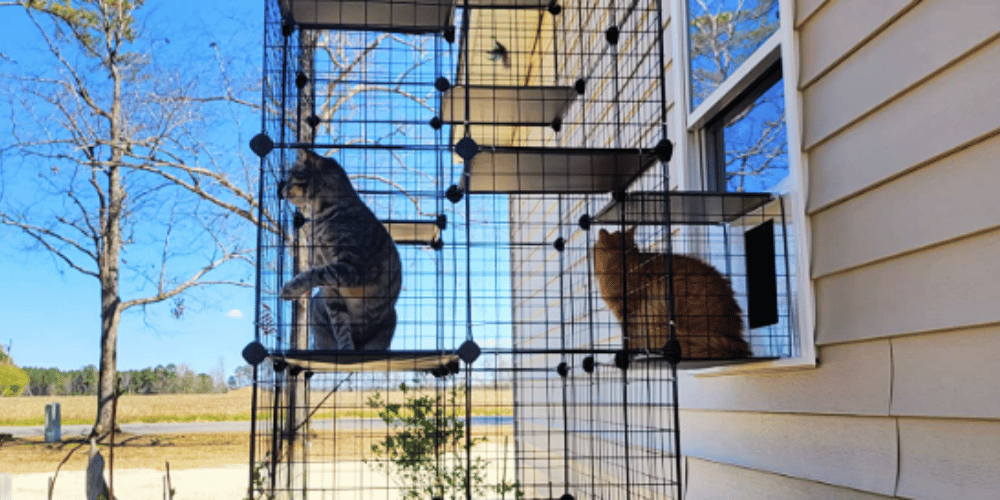
The Debate on Nighttime Crating
The practice of crating cats at night is a topic of debate among many cat owners and feline behaviorists.
While some argue that it provides a secure place for the cat, others believe it restricts the cat's movement and can lead to unnecessary stress. The key is to understand the individual needs of your cat and whether crating aligns with those needs.
Is Crating Cats Inherently Cruel?
To determine if crating your cat at night is cruel, it's essential to consider the cat's safety, comfort, and natural behaviors. A well-adjusted kitty may find a crate a safe space, while others may feel trapped and anxious. The intention behind crating and the cat's perception of the crate play significant roles in this assessment.
Considering Your Cat's Personality
Every cat is unique, and their response to crating can vary. Some cats may appreciate the solitude and security of a crate, especially in a new environment or when other pets are present. On the other hand, social animals like cats may find the separation challenging, leading to behavioral issues.
The Purpose of Crating Cats
Many cat owners consider crating as a means to prevent destructive behavior or litter box accidents during the night. However, it's crucial to address the root cause of these issues, which may stem from medical or behavioral problems, rather than relying solely on crating as a solution.
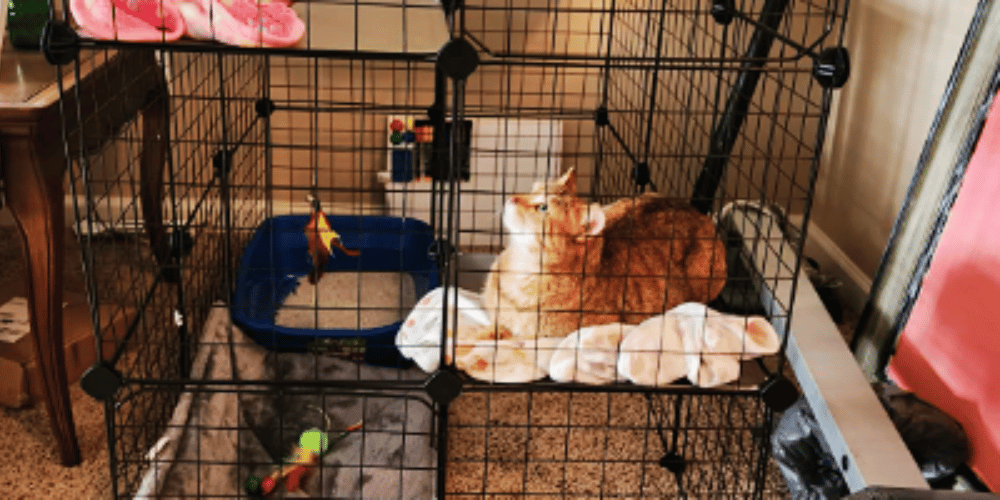
Safety vs. Confinement
While a cat's safety is a top priority for pet parents, crating should not be a substitute for a safe and cat-proofed house. If crating is used, it should be with the intention of providing a secure place that the cat associates with comfort and not as a means of confinement.
The Right Way to Crate Cats
If you decide to crate your cat, it's essential to do it correctly. A large crate with enough space for the cat to stand, turn around, and stretch, along with a comfortable bed, can make the experience more pleasant. Additionally, leaving the door open during the day can help the cat view the crate as a voluntary retreat rather than a cage.
Creating a Positive Association
To ensure that your cat does not view the crate as a punishment, it's important to create positive associations. This can be done by placing treats, toys, and even feeding your cat in the crate. A feline behaviorist can offer guidance on making crating a positive experience for your cat.
Alternatives to Crating at Night
Before resorting to crating, consider alternatives that might better suit your cat's needs. A separate sleeping area, such as a spare room with a cozy bed and access to a litter box, can provide the cat with a sense of freedom while keeping them away from potential nighttime mischief.
Enriching the Nighttime Environment
Providing your cat with stimulating toys and activities can help tire them out before bedtime, potentially reducing the need for crating. Scratching posts, puzzle feeders, and interactive toys can keep your cat entertained and help them sleep through the night.
The Benefits of Crate Training for Cats
Crate training is often associated with dogs, but it can be beneficial for cats as well, especially when it comes to cat s safety and managing noisy cat behavior at night. When done correctly, crate training can provide a secure environment for your new cat or new kitten, ensuring they have a good night s sleep and are not causing mischief around the house.
It's important to introduce the cat s crate gradually, making it a positive space with comfortable bedding, familiar scents, and even some dry food to encourage your cat to enter voluntarily.
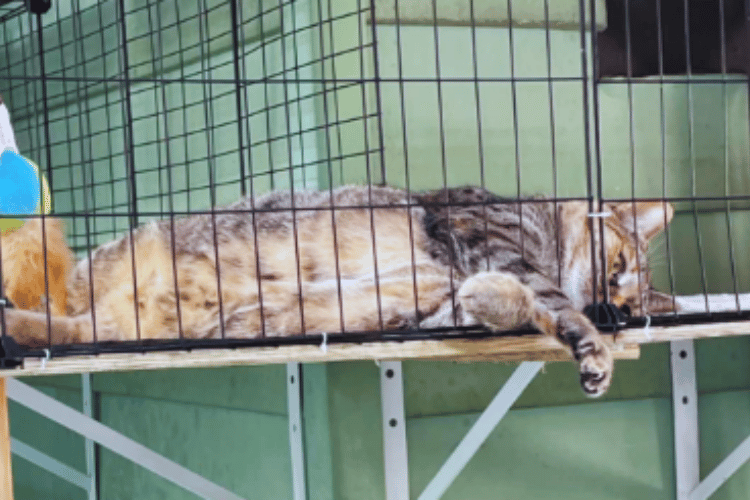
Moreover, crate training can be particularly useful when you need to transport your cat, whether for a visit to the vet or a move to a new home. Cat carriers and cat crates are essential tools for these situations, and a cat that is comfortable with its crate will experience less stress during travel.
For unaltered males or cats that tend to be more territorial, being in a cat cage for longer periods can prevent unwanted behaviors and accidents, provided that their physical and emotional needs are met with regular interaction and playtime outside the crate.
The Psychological Effects of Crating on Cats
When considering whether to crate your cat at night, it's essential to understand the psychological impact this can have on your feline friend. Cats are territorial animals that thrive on freedom and control over their environment.
Placing a cat in a crate can induce stress and anxiety, especially if they are not accustomed to it. It's important to observe your cat's behavior when they are in the carrier. If they seem agitated or distressed, it may be a sign that crating isn't suitable for them. On the other hand, some cats may adapt and even find solace in the confined space if introduced properly.
To ensure that a cat crate becomes a positive space, it's crucial to associate it with pleasant experiences. Start by placing treats or their favorite toys inside the crate to encourage voluntary exploration. Gradually increase the time your cat spends in the crate, always monitoring their comfort level.
If your cat sleeps peacefully in the crate and enters it willingly, it can be a sign that they have accepted it as a safe space. However, forcing a cat into a crate without proper crate train techniques can lead to a negative association, making future crating attempts more challenging. The Significance of a Cat's Territory at Night Cats are territorial creatures by nature, and their environment plays a crucial role in their sense of security, especially at night.

When considering whether to have your cat stay in a crate, it's important to understand that cats often patrol their territory during the twilight hours. This is not just a habit, but an instinctual behavior that helps them ensure their area is safe and free from intruders. Restricting this natural inclination by crating can lead to stress and anxiety, as the cat may feel unable to fulfill its territorial duties.
Creating a safe and comfortable space within your home where your cat can roam freely at night can be a better alternative to crating. This allows your feline friend to express its natural behaviors while still ensuring it stays out of trouble. If you're concerned about your cat causing mischief or getting into dangerous situations, consider cat-proofing certain areas of your home where it can stay during the night. This compromise ensures your cat's territorial needs are met without the potential negative impacts of confinement.
The Role of Routine in a Cat's Nighttime Behavior Cats are creatures of habit, and establishing a consistent routine can greatly influence their nighttime behavior. If you're training your cat to stay in a specific area at night, whether it's a crate or a designated room, consistency is key.
A predictable schedule helps your cat understand and adapt to the expectations, reducing the stress associated with nighttime confinement. Feeding, playtime, and cuddle sessions should all occur at regular times to help your cat feel secure and content.
Moreover, incorporating a bedtime routine can signal to your cat that it's time to settle down for the night. This might include a final play session to expend any leftover energy, followed by a quiet period to help your cat wind down.
By doing so, you can encourage your cat to stay calm and restful throughout the night, reducing the likelihood of nocturnal restlessness or disruptive behavior. A well-thought-out routine not only promotes better sleep for your cat but also for you, ensuring a peaceful household for everyone involved.
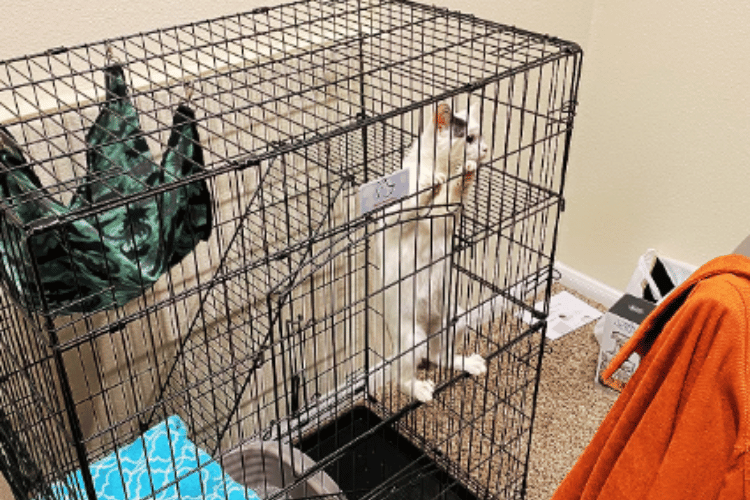
The Practicality of Crating Cats in Multi-Pet Households
In homes with multiple pets, a cat crate can serve as a personal haven for your cat. It can provide a sense of security and a place to retreat when the household becomes too chaotic or when conflicts with other pets arise.
When each cat has their own designated space, it can help reduce tension and territorial disputes. It's important to ensure that each cat carrier is placed in a separate, peaceful area of the home to prevent any feelings of competition or threat among the pets.
However, when crate training multiple cats, it's vital to respect each cat's individual needs and preferences. Some cats may prefer to stay close to their companions, while others might value solitude. Observe how each cat reacts to being in a crate and adjust your approach accordingly.
If a cat in a cage shows signs of discomfort or persistent resistance, it may be necessary to explore other options to ensure their well-being. Remember, the goal is to create a harmonious environment where each cat feels safe and content, whether inside or outside of their crate.
Integrating Crating into Your Cat's Daily Routine
Integrating a cat s crate into your cat's daily routine can help your feline friend become a well adjusted kitty. Start by placing the crate in an area where your cat spends a lot of time, and leave the door open so they can explore it at their own pace. Encourage exploration by placing treats or toys inside.
Over time, your cat will start associating the crate with positive experiences. This can be especially helpful for a mother cat who needs a secluded area to care for her kittens or for a new pet that is still acclimating to its surroundings.
It's also essential to ensure that the cat s litter box is always clean and accessible, even when your cat is spending time in their crate. This will prevent any negative associations with the crate due to discomfort or accidents.
Remember, caging cats should never be a substitute for proper behavioral training or a way to neglect your pet's need for cat s movement and interaction. Instead, it should be part of a broader approach to raising a happy and healthy cat, backed by vet reviewed facts and best practices.
The Impact of Crating on Kittens and Senior Cats
Kittens sleep more than adult cats and may adapt more easily to crating if introduced properly. However, they also require more frequent access to food and the litter box. Senior cats, on the other hand, may have health issues that make crating uncomfortable or even harmful.
Special Considerations for Different Life Stages
It's important to consider the life stage of your cat when deciding on crating. Kittens require more attention to their bodily functions, while senior cats may need easy access to their litter box due to medical issues. Crate training should be adjusted accordingly.
Addressing Behavioral Issues Without Crating
Behavioral issues that lead to nighttime disturbances can often be managed without crating. Engaging in playtime before bed, establishing a routine, and consulting with a vet or behaviorist can provide solutions that address the root cause of the problem.
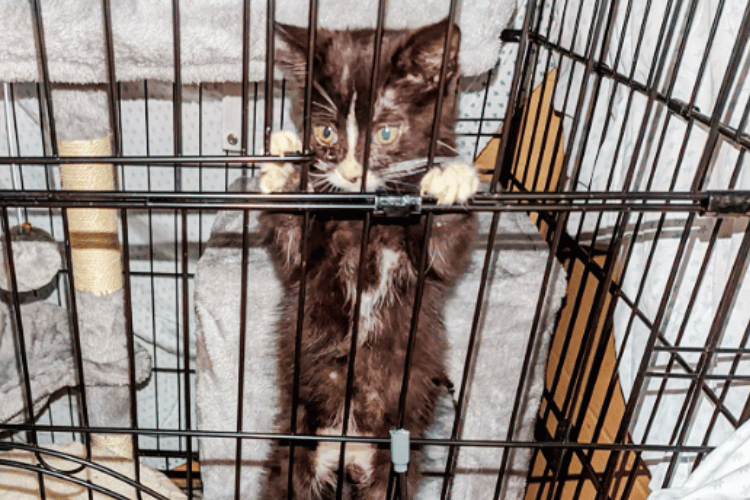
Seeking Professional Advice
If your cat exhibits destructive behavior or inappropriate elimination, it's crucial to seek advice from a vet or behaviorist. These issues may indicate a medical issue or stress, and professional guidance can help resolve them without resorting to crating.
The Role of Litter Box Training
Proper litter box training can reduce the likelihood of accidents at night, making crating less necessary. Ensuring that your cat has easy access to a clean litter box and understands its use is a fundamental aspect of feline care.
Maintaining a Clean and Accessible Litter Box
A cat's litter box should be kept clean and placed in a quiet, accessible location. This encourages proper litter box habits and can prevent accidents that might otherwise prompt an owner to consider crating.
The Social Nature of Cats and Crating
Cats are social animals, and their interactions with their environment and other cats can influence their behavior at night. Understanding the social needs of your cat can help determine if crating is appropriate or if other solutions might be more suitable.
Considering Multiple Cats in the Household
For households with two cats or more, crating one cat might disrupt the social dynamic. Providing separate sleeping areas or multiple litter boxes can help maintain harmony and reduce the need for crating.
The Importance of Keeping Up to Date with Veterinarian Research
Staying informed about the latest veterinarian research is crucial for making decisions about your cat's care. Vet-reviewed facts can guide you on the best practices for crating and overall feline well-being.
Consulting with Your Vet
Before deciding to crate your cat, it's advisable to have a vet appointment to discuss your cat's specific needs and any health concerns. Your vet can provide up-to-date information and personalized advice.
Summary
Crating a cat at night is not inherently cruel, but it must be approached with consideration for the cat's comfort, safety, and natural behaviors. Alternatives to crating should be explored, and professional advice should be sought to address any underlying issues. By understanding your cat's needs and providing a loving environment, you can ensure that your feline friend enjoys a good night's sleep, whether inside or outside a crate.
FAQ Section
Can crating a cat at night cause stress or anxiety?
Yes, crating can cause stress or anxiety in some cats, especially if they view the crate as a restrictive space. It's important to create a positive association with the crate and consider the individual needs of your cat.
How can I make a crate more comfortable for my cat?
Ensure the crate is large enough for your cat to move comfortably, include a soft bed, and consider adding familiar items like toys or a piece of clothing with your scent. Keep the crate in a quiet area and make it a positive space with treats and play.
Are there alternatives to crating a cat at night?
Yes, alternatives include providing a separate sleeping area, enriching the nighttime environment with toys, and addressing any behavioral issues with the help of a vet or behaviorist. It's also important to ensure your cat has a clean and accessible litter box.
Thank you for visiting LegitLists we hope this helps you make a legitimate choice!






